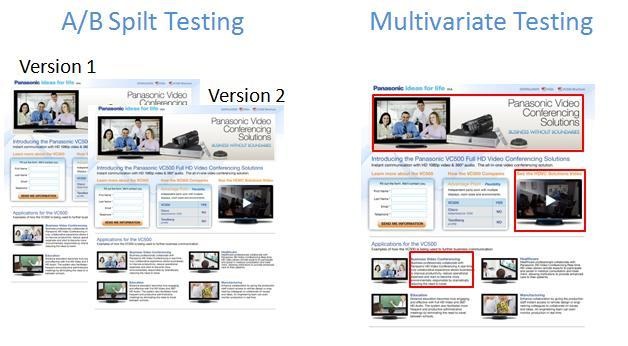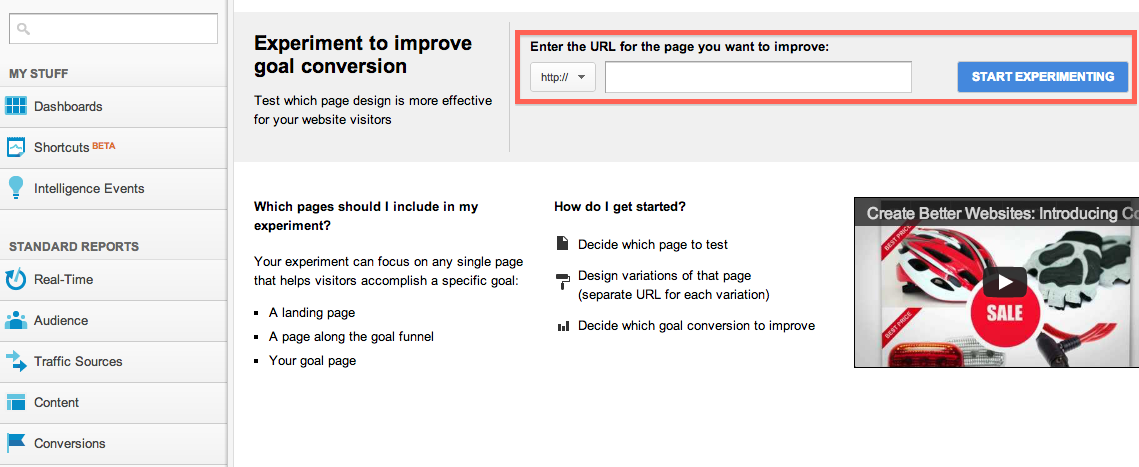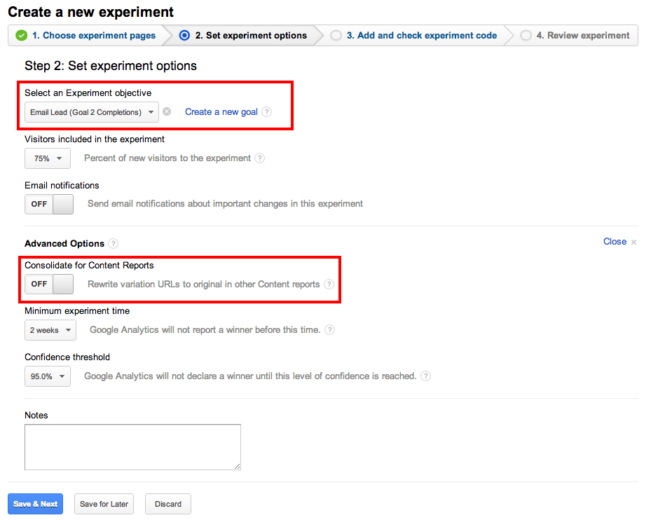Are You Getting The Most Out Of Your Landing Pages?

For this Month’s Series, we’re going to be talking about new and exciting things that you can test within the wonderful world of PPC. Take your accounts to the next level with some of these new techniques or tools.
Businesses work hard to keep their storefronts clean. Well, sometimes I beg to differ myself, but that’s beside the point. They want to make their customers feel warm and welcome, which often leaves a good first impression. They say first impressions are crucial and the same goes for online storefronts. In other words, your website or landing page.
Landing Page Testing in PPC
The quality of your landing page is an important player in the PPC industry, which make it important to test your landing pages often. Typically, this involves either of the following:
- A/B Approach – Allows you to test two entirely different pages or variations against each other.
- Multivariate Approach – Allows you to test multiple elements of a page at the same time. In the example above, they are testing different combinations of banner ads, videos and body text. This is helpful since it allows you to distinguish which combination of elements worked best.
Deciding the best approach depends on the amount of traffic your page receives. If you generate +1000 pageviews a day, it’s probably safe to go multivariate. However, anything less than that may want to consider an A/B approach.
Common Landing Page Tests
Regardless of the approach you choose, there are several possibilities for things worth testing on your landing pages, each of which can help make incremental improvements to your conversion rates:
- Call-to-action buttons – Refers to the phrase that you use for the desired action (conversion) or the button that users click on to go to the next step in your conversion process. Items to test include size, shape, color, wording and more.
- Headlines – Should be relevant, timely and appropriate for your audience. Consider testing emotional vs. benefit-driven headlines or questions vs. statements, for example.
- Body Copy – Should also be relevant, timely and appropriate for your target audience, as well as sufficiently backup your headline. For example, you might try testing out shorter vs. longer text or paragraphs vs. bullet points.
- Images & Symbols – Images and symbols can also be nice compliments to a PPC landing page if used sparingly. Images should be engaging and help compliment the basis of the landing page itself. Symbols and certification badges are also helpful for building trust and credibility. For example, you might test different types of images or placements of your trust badges.
- Navigation – Adjusting the usability and navigational features of your website can also be worth testing. As a rule of thumb, it should be relatively easy to get around. If your mom can’t find her way around the site, there are probably others experiencing the same problem. Things to test include different placements of your navigation bar or the number of steps in your checkout process.
- Different Pages – After you’ve tested some of the elements on your page, it might also be worth testing different pages against each other. For example, you might consider testing your main homepage against a PPC-specific landing page or two different PPC-specific pages against one another.
- Promotions – Seasonal or time-sensitive offers are also worth testing on your landing page. These both create a sense of urgency that might help boost conversion rates. Whether it’s free shipping or 30% off all merchandise, benefits like these are attractive and can encourage visitors to take action.
Setting Up Landing Page Tests
So now that we have a bunch of good ideas, how do we go about testing those items on our landing pages? Fortunately, Google Analytics offers up a nice tool to help us with this. Formerly known as Website Optimizer (standalone product), Analytics Content Experiments is now integrated within Analytics and acts as a tool for testing changes to your landing pages. One of the best parts about this tool is the fact that it automatically reveals if a test is statistically significant based on the KPI you select. However, there are plenty of other neat features about the product but let’s take a look at how you set up Analytics Content Experiments:
1. Click on Experiments under the Content Reporting section as shown below.
2. Enter the destination URL of the page you’re trying to improve.
3. Give your experiment a name and enter the destination URLs for each page you want to test. If you want to test more pages, simply click the Add Variation link at the bottom, as shown below.
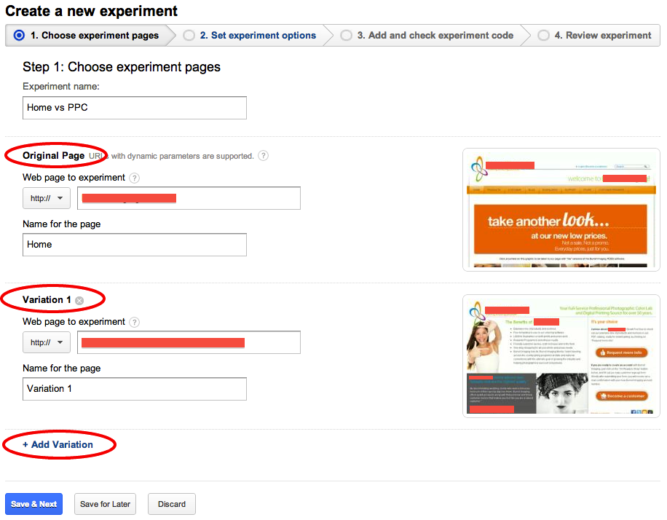
4. Specify your experiment options. First, you need to select a KPI that Analytics can use to determine the results. In the example below, I’ve selected Email Leads. You also have the ability to decide how much traffic you want to participate, setup email notifications and more.
5. Add the Analytics Experiment code to your control/original page. If you want to add the code yourself, simply select that option as shown below. You also have the option to email the code to your developer if you don’t have access to the javascript.

6. The last step in the setup process will check to make sure the code has been placed on your page. As shown below, you can see that the system has recognized the fact that my code hasn’t been placed yet. If you want to check this later, you can select the skip validation and continue link at the bottom.
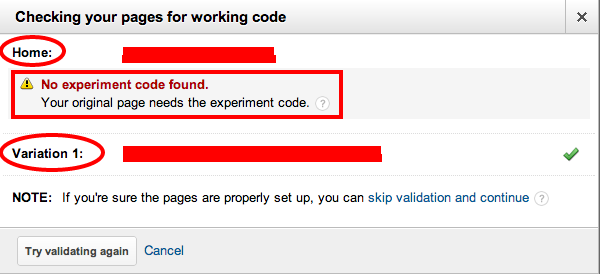
You can learn more about Analytics Content Experiments and other features for improving conversion rates here.
Closing Thoughts
Landing pages are a crucial element of any PPC campaign, so it is important to test them regularly. We’ve covered most of the basics here, including common tests and Analytics Content Experiment setup, so hopefully you’ve taken something useful away from all this.
In closing, what are some of the items you like to focus on and improve when it comes to your landing pages? What were the results? Feel free to leave your thoughts below. As always, thanks for reading!



